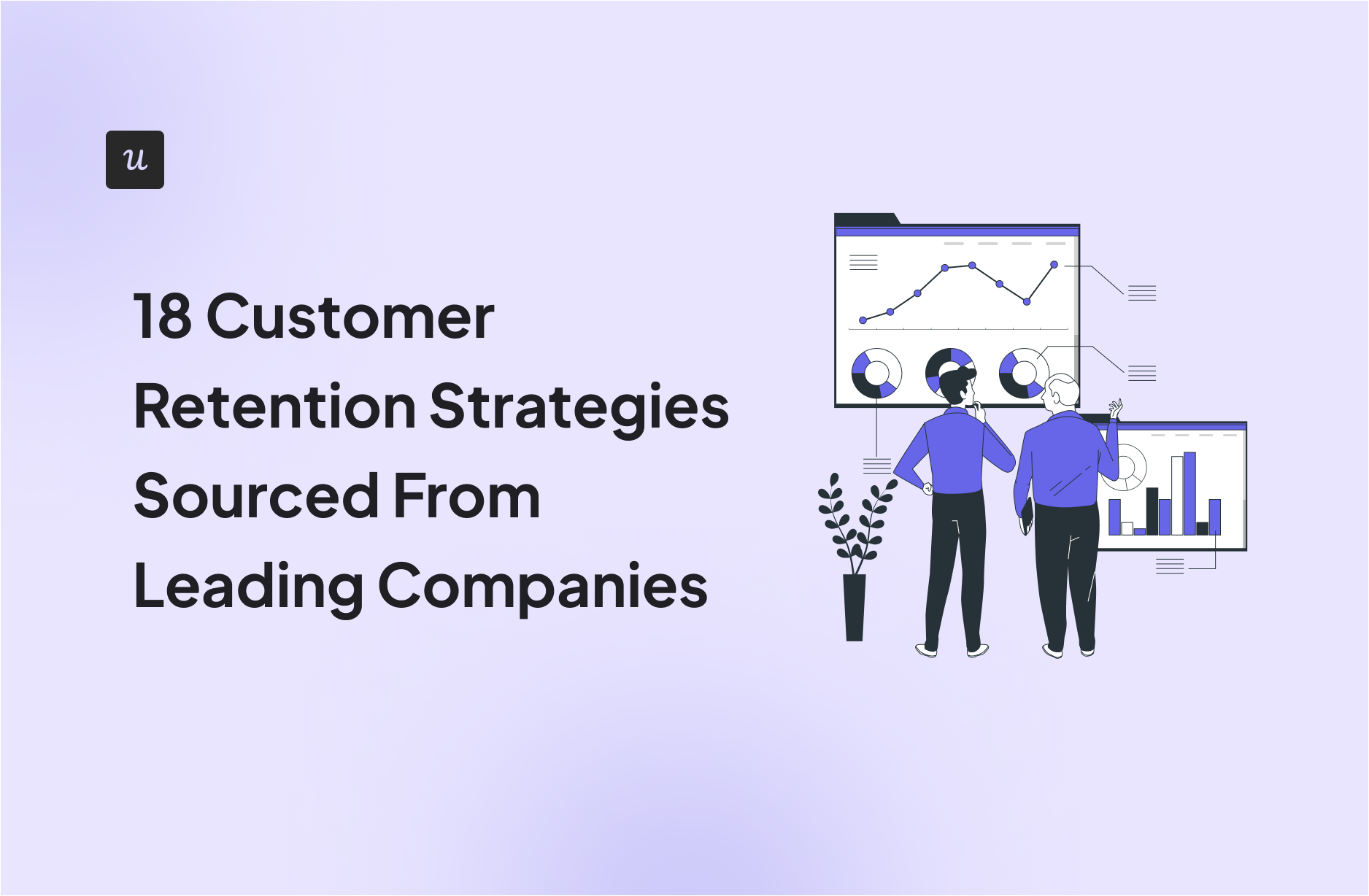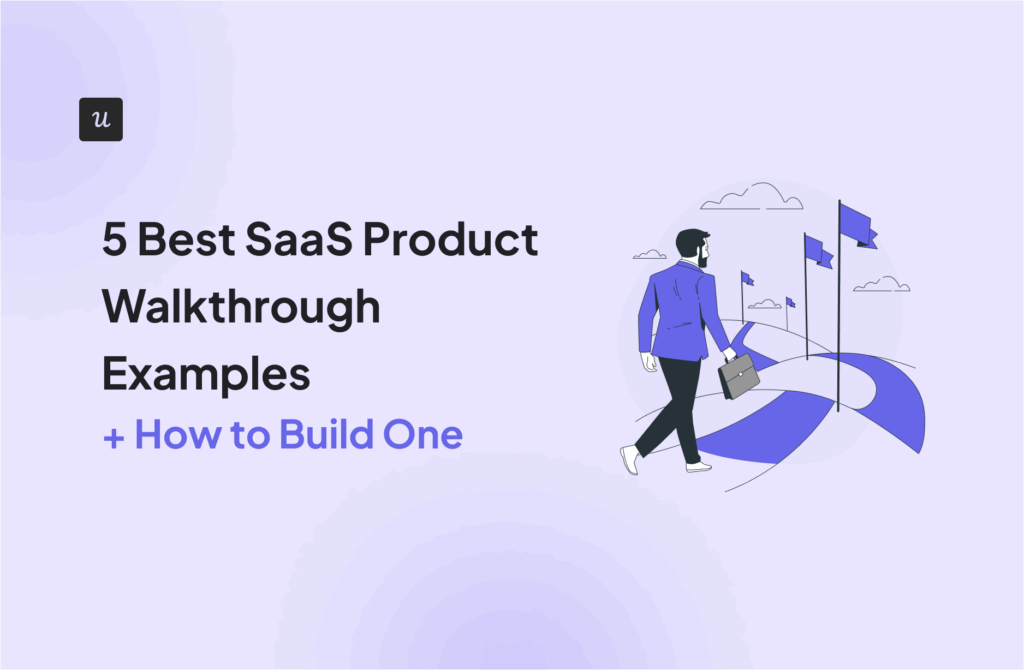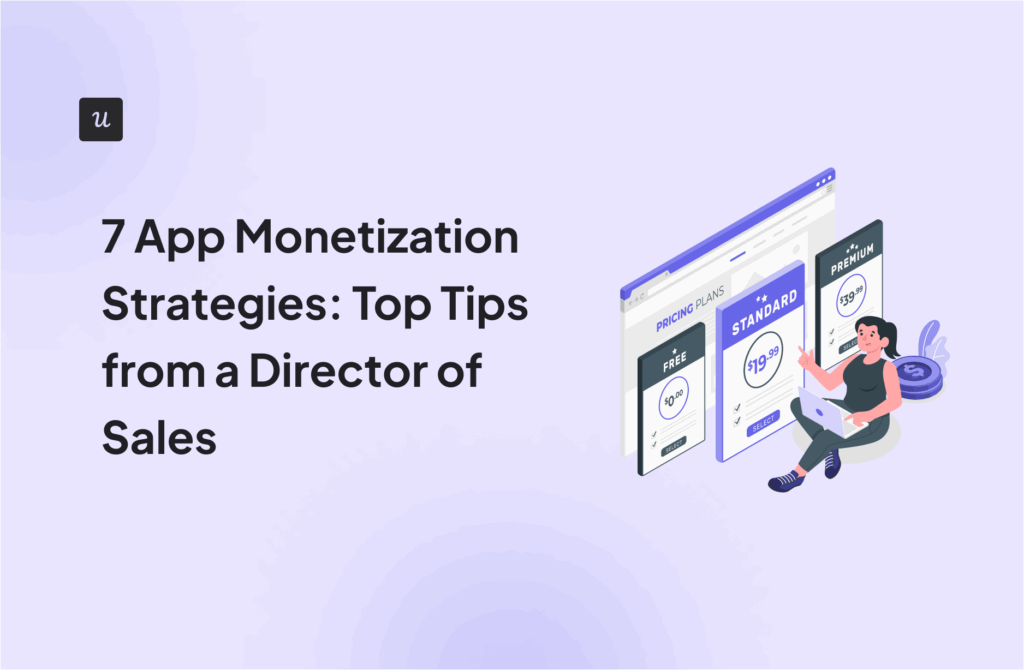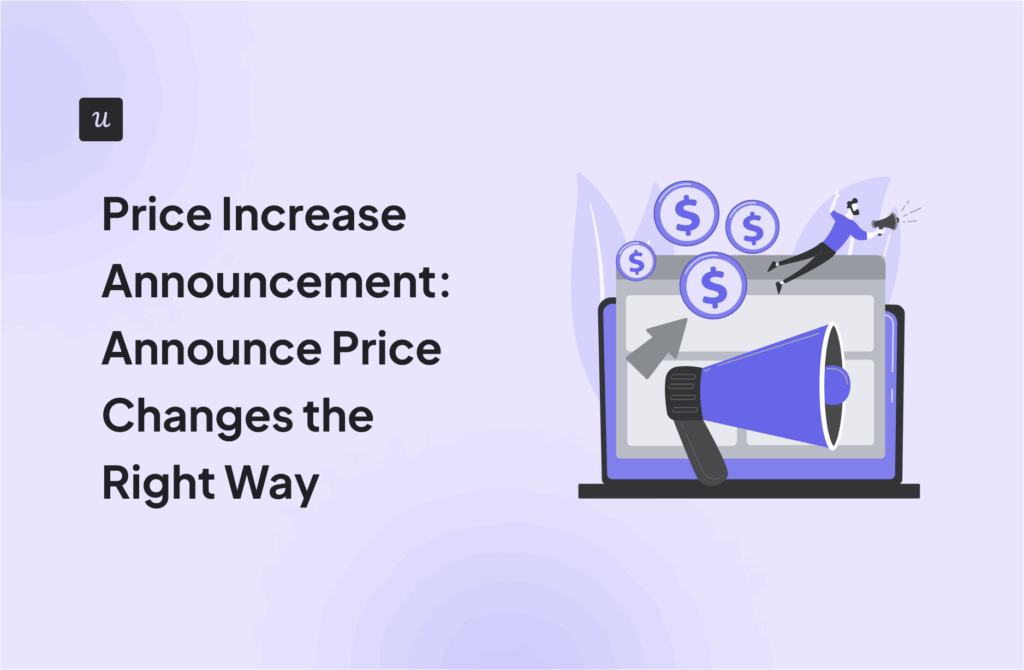
With so much content available on customer retention and reducing churn, how do you know which strategies truly make an impact?
To answer this, we’ve sourced customer retention strategies from 18 leading companies across different industries. Buckle up as we explore each of them in detail.
Get The Insights!
The fastest way to learn about Product Growth, Management & Trends.
18 Customer retention strategies for increasing loyalty
You probably already know what customer retention is or what a good retention rate is (if you don’t, head over to the FAQs at the end), so let’s get right to the 18 retention strategies I hand-picked for you.
1. Conduct usability and preference tests before product launches
Usability and preference testing lets you identify user needs and uncover UX issues that might derail your product’s success.
The key is to conduct it early in the product lifecycle and work in small increments to avoid wasting time on designs that don’t work.
For example, Beable ran Userpilot surveys to collect user preference data when working on its product re-design and used the insights to inform its product roadmap.

2. Gather customer data to better understand their needs and wants
How can you satisfy user needs if you don’t know who they are or what they want to achieve?
It’s next to impossible. Unless you’re incredibly lucky, but that won’t last.
The solution?
Collecting the necessary data from the customers as they sign up for the product.
ClearCalcs, a structural analysis platform for engineers and a Userpilot customer, uses welcome surveys to collect information about new sign-ups: their roles and objectives. So that they can tailor their onboarding experience and inform future product development.

3. Create personalized customer experiences throughout their journey
Customer journey personalization makes the customer experience relevant. It’s like a tailored dress, made to measure for a perfect fit.
How can you customize customer experiences in SaaS?
First, get to know your customers. Canva, just like ClearCalcs, does it by asking new users about their role and the context of where they’re planning to use the tool in a welcome survey.
Once the user chooses their role, Canva personalizes their dashboard with shortcuts to templates they will find most relevant.

4. Encourage customers to engage through gamified elements
Ever wondered what makes computer games addictive? They’re designed to stimulate the brain’s reward system. This leads to dopamine release and creates a sense of pleasure and achievement.
You can try to replicate the same kind of stimulation to improve user retention by embedding gamification elements in the user experience. These could be:
- Points and rewards.
- Badges and trophies.
- Leaderboards.
- Levels and achievements.
- Progress bars.
- Social sharing.
- Storytelling.
Groupize, a business travel management platform, has gamified its onboarding experience by creating an assistant called The Groupize Guide, or G.G. for short.
G.G. helps its users get to know the product through checklists, product tours, live chat, and self-serve resources.

5. Celebrate customer milestones to foster long-term loyalty
Celebrating important milestones can also give users a dopamine shot. Consequently, it drives repeated use, which is necessary for product adoption and long-term retention.
Tumblr, the microblogging platform, uses this strategy to encourage new users to post regularly.
Check out this email they sent when the user publishes their first ten posts.
It features a badge and a congratulatory message to stimulate the reward system. But it doesn’t stop there: it contains two CTAs encouraging users to share this post and create new ones. This further reinforces the desired behavior.

6. Implement a customer feedback loop to stay ahead of changing preferences
User preferences aren’t set in stone: they keep changing along with the market demands, trends, and new technological developments. So the fact that you assessed them accurately during the initial discovery doesn’t mean they’re still true.
To stay on top of the changing user needs and wants, regularly collect feedback.
At Userpilot, we use an in-app survey to collect user insights and requests regularly. The survey is short and sweet: it consists of 2 questions, a mix of closed-ended and open-ended questions to learn the what and the why.
Users can find this short feedback form in the resource center, available whenever they feel the need to submit feedback or a request.

7. Spot and address friction points by monitoring customer behavior
Customer feedback works best with product analytics. That’s how you can find which users experience friction in their product journey and where. And then follow up with them to get to the root cause.
That’s what Leyre Iniguez, Customer Experience Lead at Cuvama, did to optimize the user journey for their customers. Userpilot’s path analysis helped her spot an issue (an error message). She then segmented the users who experienced it and contacted them to investigate the details.

8. Localize experiences to increase customer retention
Software localization increases user engagement and retention.
Think about it:
Users who can understand the UI elements and your messages well are more likely to respond to them and experience product value.
For example, localized surveys have higher response rates and offer more in-depth insights because the user can better articulate their thoughts in their native tongue.
That’s why RecruitNow, a Dutch ATS company catering to the German and Austrian markets, uses Userpilot’s localization feature to translate its resources and surveys for its target audience.

9. Reengae inactive users through targeted emails
Inactive users are difficult to reengage because you can’t nudge them with a cheeky tooltip or a modal when they don’t log in.
Solution?
Use email. Segment inactive users in your analytics tool, push the data to the CRM or email platform, and ping them a message so they don’t forget about you for good. Like the one from Grammarly below.
What makes it so cool?
- The use of casual and friendly language.
- Praise (“really into writing things on the Internet” and “you can come back and continue writing awesome things”).
- Visual appeal: the picture of the melting clock is eye-catching and symbolizes the impact of passing time on us and our relationships (and our writing skills).

10. Provide proactive support for retaining customers
When it comes to customer support, you have two options. Respond to issues when they arise or anticipate them and nip them in the bud before they escalate.
In the first instance, there’s a risk that customer dissatisfaction reaches the point of no re-churn (sorry, couldn’t resist it).
If you choose the latter approach, how can you anticipate possible hiccups?
Use analytics to look for signs of friction in user behavior, collect feedback regularly, and listen to what your customers have to say behind your back. In reviews, on forums, and on social media.
And use the insights to provide in-app self-serve support through resource centers with tutorials and guides, as Talana did.

11. Announce new features to exceed customer expectations
New features, be they newly released ones or new to the user, keep them engaged and increase retention.
There are three main reasons for this:
First, there’s the element of novelty. It keeps the boredom away.
Second, launching new functionality signals that your product is constantly developing to keep up with technological developments and user needs.
Third, users need more advanced features to realize the full product value.
But to do it, they first need to discover the new features and learn how to use them.
To help them, Figma uses in-app feature announcements.
Here’s an example of a modal announcing the addition of bulleted and numbered lists. It highlights the key benefits and includes 2 CTA buttons. One prompts the user to try the feature and the other to view additional support resources.

12. Trigger upgrade modals to increase customer lifetime value
There’s another reason to help users discover new features: to make them upgrade to a higher plan.
That’s what Loom achieves with this super simple yet effective upsell modal. The message appears when the user reaches the 5-minute video limit and explains how they can get around it (upgrade).
What makes the strategy powerful is its contextuality. The modal appears when the user experiences the pain. That’s when they are most receptive.

13. Build a strong customer community
A strong community around your product has multiple benefits. Members support each other, exchange resources, and share success stories. This inspires others, allows them to fully realize the product’s potential, and gives them a sense of belonging.
It also creates a moat that stops customers from leaving and competitors from disrupting you.
Let me explain:
If the user ever thinks about switching to an alternative product, they must take into account that they will be leaving all that community goodness behind. Competitors can’t simply copy a community like a feature. They need to grow it from scratch. And nurture it before they start reaping benefits.
Check out Notion’s community and Ambassador program, which includes groups, resources, events, and certification programs.

14. Offer seamless integrations with other tools
Integrations are another way to create a moat. Once the user sets up their perfect workflow around your tool, they will be reluctant to experiment with alternatives. Switching takes time and effort, after all, and they could be spending it on value-added tasks instead.
More importantly, integrations improve the product value. For example, by making users more productive and minimizing the risk of errors. This increases customer satisfaction, loyalty, and retention.
Slack realized this a while ago, and now it offers dozens of integrations with leading applications like Asana, Workday, and Figma, so that users can sync their data seamlessly and streamline their processes.

15. Implement a customer loyalty program and reward them
Loyalty programs motivate customers to stay with the company by offering them exclusive benefits, like tiered rewards, early access to new features, or exclusive access to perks.
For instance, Mailchimp’s loyalty program, Mailchimp & Co, offers their B2B customers access to training, certification, and priority support. By doing so, it enables them to upskill and better leverage the tool to achieve their goals.
This translates into greater customer satisfaction. And remember, satisfied customers are loyal customers.

16. Implement a customer advocacy program for your most loyal customers
Customer loyalty programs are often combined with advocacy schemes: they reward customers for recommending the product to their friends or colleagues who become customers.
Apple’s Shot On iPhone is an excellent example of such a scheme.
Apple encourages users to share photos taken on their iPhones. The company rewards the most creative photos by featuring them on Apple digital platforms and in marketing resources, like their billboards, and crediting their work. This gives the winners global exposure and a licensing fee.

17. Consistently educate your new and existing customers
Customer education improves their competence and helps them realize the full product value. This makes them more successful and, consequently, more satisfied.
How can you facilitate customer education?
At Userpilot, we do it through:
- In-app support resources in the resource center.
- Regular webinars focusing on specific product use cases.
- The annual Product Drive conference featuring renowned speakers from the product space.
Such events not only educate but also foster a sense of community among customers, which improves retention.

18. A/B test your customer retention strategy
To optimize your customer retention strategy, conduct A/B tests. That’s when you run two versions of your in-app flow, UI, or resource at the same time and compare their performance.
HubSpot used A/B testing to improve the click-through rates for its newsletter. The team’s hypothesis was that left-adjusted text would perform better than copy in the center.
However, after running the two versions in parallel, it turned out that the change led to a 25% drop in clicks.

How can Userpilot help you maximize repeat customers?
Userpilot offers a number of tools that you can lean into to improve customer retention.
To start with, there are the UI patterns. You can use them to create in-app experiences to onboard new users, announce new features, drive account expansion, and communicate all the important things that they need to know.

With our mobile SDK, you can create targeted onboarding flows using slideouts, carousels, and push notifications without writing extra code.
There are also powerful analytics that let you track user behavior in-app, analyze it in detail, and track key metrics and trends from custom dashboards.

To gather qualitative data, use the in-app surveys. You can send them to specific user segments and at a specific time. Or trigger them contextually when the user completes an action, for example, to measure the success of new features.

Finally, there’s the resource center where you can provide self-service materials, like how-to guides or video tutorials. So that users can solve their problems without your help.

So you get engagement, feedback, and analytics features under one hood. And our customers love it.

Leyre Iniguez, Customer Experience Lead at Cuvama, about Userpilot’s versatility.
Frequently asked questions about customer retention
Before we check out, let’s answer a few of the frequently asked questions about customer retention.
What is customer retention?
Customer retention is your ability to keep your existing customers. In retail, it’s about making them come back and buy more, and in SaaS—keep using your product and renew subscription fees.
Why is customer retention important?
The ability to retain customers is essential for sustainable growth. It’s difficult to imagine growing your customer base while constantly losing existing customers.
That’s because acquiring new customers is way more difficult and expensive than retaining them. Imagine a leaky bucket. Once you fix the hole, keeping the water in will cost you no effort. But before you do it, there’s no point refilling it with new water.
Customer retention has an impact on your revenue. That’s because loyal customers have a bigger customer lifetime value. They spend money for longer and are more likely to upgrade to higher plans.
How to calculate the customer retention rate?
To calculate the retention rate, deduct the number of new customers from the total number of customers at the end of a period and divide it by the number of customers at the beginning of that period.
So if you had 100 users at the beginning of the month, acquired 23, and ended the month with 111, your retention rate is 88%=((111-23)/100).

What is a good customer retention rate?
According to Userpilot’s SaaS Product Success Metrics Benchmark Report, the average 1-month retention rate in SaaS is 46.9%. However, what constitutes a good retention rate depends on your vertical.
For example, the fintech companies in the study had a retention rate of 57.6%, while healthcare companies had only 34.5%
It also depends on your customer size. The 2020 SaaS Retention Benchmarks for B2B Companies report by SaaS Capital found that companies with the largest annual contract value also had the largest median retention rate. So, companies catering to enterprise customers will have higher retention rates.
Conclusion
The 18 examples of retention strategies illustrate how you can use different tactics to build a satisfied and loyal customer base and reduce churn, which is essential for growth.
If you’d like to learn more about Userpilot and how it can help you enhance your customer retention initiatives, book the demo!







